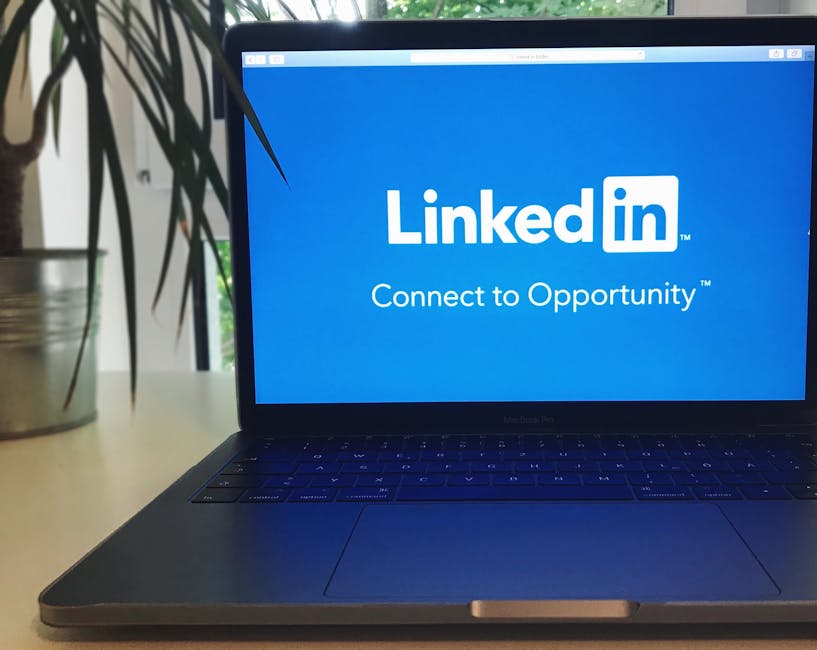The global digital advertising landscape has undergone a profound transformation, positioning video ads on social media platforms as an indispensable cornerstone of modern marketing strategy. This shift is not merely an evolution but a revolution, driven by changing consumer behaviors, technological advancements, and the inherent power of visual storytelling. Video’s ability to convey complex messages, evoke emotion, and build brand affinity in a concise, engaging format has made it the preferred content type across virtually all social channels. Its dominance stems from its unparalleled capacity for engagement, fostering deeper connections with audiences in an increasingly competitive attention economy. Consumers are now consuming video content at unprecedented rates, with short-form formats like TikTok, Instagram Reels, and YouTube Shorts leading the charge, reshaping how brands approach their digital advertising initiatives. The immersive nature of video, combined with the ubiquitous presence of mobile devices, ensures that video ads are not just seen, but experienced, leading to higher recall, stronger brand recognition, and ultimately, greater conversion rates.
The Foundational Power of Social Video Advertising
The intrinsic value of video lies in its multi-sensory appeal. Unlike static images or text, video combines visual dynamics, sound, and narrative structure to create a compelling experience. This richness translates directly into tangible marketing benefits. Videos are inherently more engaging, capturing attention more effectively and holding it for longer durations. This increased engagement often leads to higher click-through rates (CTRs) and significantly improved conversion rates compared to other ad formats. The storytelling potential of video allows brands to articulate their value proposition, demonstrate product utility, and showcase their brand personality in a way that resonates deeply with target audiences. Moreover, video content is highly shareable, leveraging the viral nature of social media to extend organic reach and foster word-of-mouth marketing. From a technical standpoint, social media platforms prioritize video content within their algorithms, often granting it greater visibility in user feeds due to its perceived value and engagement potential. This algorithmic preference underscores the necessity for brands to integrate video advertising centrally into their social media strategies. Furthermore, the mobile-first consumption habits of modern audiences perfectly align with video content. Vertical video, designed for smartphone viewing, has become the standard, optimizing the user experience and ensuring seamless integration into daily scrolling behaviors. The ability to convey complex information quickly and efficiently is another significant advantage, allowing brands to educate, entertain, and persuade within fleeting moments of user attention, critical in a world of shrinking attention spans.
Current Trends Shaping Social Video Advertising
The social video advertising ecosystem is dynamic, constantly evolving with new platforms, features, and consumer preferences. Staying abreast of these trends is crucial for maintaining relevance and maximizing campaign effectiveness.
1. Short-Form Video Dominance:
The meteoric rise of platforms like TikTok, followed by the rapid adoption of Instagram Reels and YouTube Shorts, has cemented short-form video as the reigning king of social content. These platforms thrive on concise, highly engaging, and often addictive content loops, typically ranging from 15 to 60 seconds.
- Implications for Advertisers: Brands must master the art of the immediate hook. The first 3 seconds are paramount to prevent users from scrolling past. Content needs to be fast-paced, visually stimulating, and deliver its core message swiftly. Authenticity often trumps high production value; raw, relatable content performs exceptionally well. Trends, popular audio, and challenges are integrated into ad strategies to appear native and less intrusive.
- Tactics: Utilize trending sounds and filters, participate in popular challenges (where relevant), create snackable content that highlights a single benefit or feature, and experiment with quick cuts and energetic pacing. A/B test various hooks and CTAs within this confined timeframe.
2. Authenticity and User-Generated Content (UGC):
Consumers are increasingly wary of overtly polished, traditional advertisements. There’s a strong preference for genuine, relatable content that feels less like an ad and more like a recommendation from a peer. UGC, testimonials, and influencer collaborations leveraging authentic voices are therefore incredibly powerful.
- Implications for Advertisers: Brands are shifting from studio-produced perfection to raw, honest, and often unscripted content. This builds trust and credibility. UGC ads often outperform branded content because they tap into social proof and feel more trustworthy.
- Tactics: Actively solicit and curate UGC, run contests that encourage video submissions, partner with micro and nano-influencers whose content feels organic, and repurpose customer reviews or testimonials into video ad formats. Show real people using real products in real situations.
3. Interactive Video Ads:
Moving beyond passive consumption, interactive video ads invite viewers to participate, transforming them from spectators into active participants. Features like polls, quizzes, shoppable tags, branching narratives, and AR filters significantly boost engagement and provide valuable user data.
- Implications for Advertisers: Interactivity dramatically increases time spent with the ad, recall, and intent. It can also serve as a soft lead generation tool or a direct path to purchase.
- Tactics: Implement clickable elements that lead to product pages, use polls to gather preferences or qualify leads, embed quizzes to educate or entertain, and experiment with AR filters that allow users to “try on” products virtually. Facebook and Instagram offer features like polls in Stories ads, and shoppable tags in feed videos.
4. Personalization and AI-Driven Optimization:
The ability to deliver highly relevant ad experiences to individual users is no longer a luxury but a necessity. AI and machine learning algorithms are central to this, enabling dynamic creative optimization (DCO) and hyper-targeted ad delivery.
- Implications for Advertisers: AI can analyze vast datasets to predict optimal ad delivery times, audience segments, and even creative elements that will resonate most with specific individuals. DCO allows for hundreds or thousands of ad variations to be generated automatically, tailoring elements like text, images, and video clips based on user data.
- Tactics: Leverage platform-native AI for ad placement and bidding optimization. Utilize DCO tools to serve personalized video creatives based on user location, past behavior, interests, or demographics. This moves beyond basic targeting to truly bespoke ad experiences.
5. Vertical Video as the Standard:
With mobile phones dominating social media consumption, vertical video (9:16 aspect ratio) has become the default format. Content designed for horizontal viewing appears less professional and often requires users to rotate their devices, creating friction.
- Implications for Advertisers: All video ad creative should be shot or edited specifically for vertical consumption. This means optimizing framing, text placement, and visual hierarchy for a tall, narrow screen.
- Tactics: Shoot natively in vertical format whenever possible. When repurposing horizontal content, ensure that the key elements are visible and centered within the 9:16 frame. Test how text overlays and brand logos appear on a vertical screen.
6. Sound-On Optimization (Beyond Sound-Off):
While the conventional wisdom has long been to optimize video ads for “sound-off” viewing (due to default muted playback on many platforms), the rise of short-form video and earbuds has shifted this. Sound, especially trending audio, is integral to the experience on platforms like TikTok and Reels.
- Implications for Advertisers: While captions and visual storytelling remain crucial for sound-off viewers, sound should be an intentional part of the creative strategy. Engaging music, voiceovers, or sound effects can significantly enhance the ad’s impact and memorability.
- Tactics: Utilize popular and trending audio where appropriate (especially on TikTok and Reels). Ensure voiceovers are clear and engaging. Add a captivating musical track that enhances the mood or message. Always include captions for accessibility and sound-off viewing.
7. Creator Economy Integration:
The explosion of the creator economy means influencers and content creators are pivotal to social video ad strategies. Brands are increasingly collaborating with creators to produce authentic, native-feeling video ads that leverage the creator’s audience trust and unique voice.
- Implications for Advertisers: Creator-led video ads often bypass ad fatigue and resonate more deeply than traditional brand-produced content. They offer access to niche audiences and build credibility through association.
- Tactics: Identify creators whose audience aligns with your target demographic and whose content style matches your brand voice. Develop clear briefs but allow creative freedom. Consider “spark ads” or “branded content ads” on platforms like TikTok and Instagram, which allow brands to run paid campaigns using a creator’s organic posts.
8. Live Shopping and Livestreaming Ads:
Inspired by trends in Asia, live shopping is gaining traction globally. Brands host live video streams where they showcase products, answer questions in real-time, and allow viewers to purchase directly within the stream. These can be promoted as ads.
- Implications for Advertisers: This creates an immediate, interactive, and highly engaging shopping experience, mimicking the appeal of home shopping networks but with social interactivity. It drives urgency and impulse purchases.
- Tactics: Host live shopping events promoted through social video ads. Integrate product tags and direct purchase links within the live stream. Collaborate with influencers to host live shopping sessions, leveraging their reach and credibility.
Core Tactics for Effective Social Video Ads
Beyond understanding the trends, implementing robust tactics is essential for translating insights into measurable results.
1. Defining Objectives and Key Performance Indicators (KPIs):
Every successful ad campaign begins with clearly defined goals. What do you want your video ad to achieve?
- Objectives: Brand Awareness (reach, impressions, video views), Engagement (likes, comments, shares, watch time), Lead Generation (clicks to landing page, form fills), Sales/Conversions (purchases, sign-ups), App Installs.
- KPIs:
- Awareness: Reach, Impressions, Video View Thru Rate (VTR), Cost Per Mille (CPM), unique video viewers.
- Engagement: Engagement Rate (likes+comments+shares/impressions), Average Watch Time, Cost Per Engagement.
- Consideration/Leads: Click-Through Rate (CTR), Cost Per Click (CPC), Landing Page View Rate, Lead Capture Rate, Cost Per Lead (CPL).
- Conversion: Conversion Rate, Cost Per Conversion (CPA), Return on Ad Spend (ROAS).
- Tactics: Start with SMART goals (Specific, Measurable, Achievable, Relevant, Time-bound). Align your video creative and targeting directly with these objectives. For example, a brand awareness video might prioritize captivating visuals and emotional storytelling, while a conversion-focused video would prominently feature a clear call-to-action and product benefits.
2. Understanding Your Audience:
Effective targeting is the bedrock of social media advertising. Deep knowledge of your target audience’s demographics, psychographics, behaviors, and viewing habits is paramount.
- Demographics: Age, gender, location, income, education.
- Psychographics: Interests, values, lifestyle, personality traits, opinions.
- Behaviors: Online purchase history, app usage, content consumption patterns, social media activity.
- Viewing Habits: What platforms do they frequent? When are they most active? Do they watch with sound on or off? What type of content do they engage with?
- Pain Points & Desires: What problems does your product/service solve for them? What aspirations does it fulfill?
- Tactics: Develop detailed buyer personas. Utilize social media analytics and third-party research tools. Conduct surveys and interviews. Use platform targeting options extensively: interest-based, behavioral, demographic, custom audiences (from your CRM or website visitors), and lookalike audiences. Tailor video content and messaging to directly address their specific needs and interests.
3. Platform-Specific Strategies:
Each social media platform has its unique audience, content format preferences, ad types, and algorithmic nuances. A one-size-fits-all approach to video ads is rarely effective.
-
Facebook & Instagram (Meta Ads Manager):
- Audience: Broad demographics, strong for e-commerce, lifestyle, and community building. Instagram leans visual and younger.
- Ad Types: In-Feed Video Ads, Stories Ads, Reels Ads, In-Stream Video Ads (Facebook), Collection Ads (video + product catalog), Playable Ads.
- Creative Nuances: Vertical (9:16) for Stories/Reels, Square (1:1) or Horizontal (16:9) for Feed. Keep videos concise (15-60 seconds optimal for feed, 15 seconds for Stories/Reels). Strong visual hook, clear branding, and compelling CTA. Overlay text and captions are critical for sound-off viewing. For Reels, embrace trending audio and fast cuts.
- Tactics: Leverage Custom Audiences for retargeting. Use Lookalike Audiences to scale successful campaigns. Test different ad placements (Feed vs. Stories vs. Reels) and optimize based on performance. Utilize A/B testing for creative variations and headlines.
-
TikTok:
- Audience: Predominantly Gen Z and young millennials, highly engaged, trend-driven.
- Ad Types: In-Feed Ads (TopView, In-Feed), Branded Hashtag Challenges, Branded Effects, Spark Ads (using organic creator content).
- Creative Nuances: Native, authentic, vertical video (9:16). Embrace trends, challenges, and popular sounds. Content should feel organic, not overtly salesy. Fast-paced editing, strong hooks within the first 1-2 seconds. Educational, entertaining, or inspiring content performs well. User-generated content style is king.
- Tactics: Monitor TikTok’s Creative Center for trending sounds and challenges. Collaborate with TikTok creators. Utilize Spark Ads to boost organic posts. Experiment with different video lengths (15-60 seconds) and call-to-actions. Keep branding subtle.
-
YouTube:
- Audience: Vast and diverse, with strong segmentation based on content interests. Global reach.
- Ad Types: Skippable In-Stream (TrueView), Non-Skippable In-Stream, Bumper Ads (6 seconds, non-skippable), Outstream Ads (on partner websites/apps), In-Feed Video Ads.
- Creative Nuances: Optimal for longer-form storytelling (TrueView) but also short, impactful ads (Bumper). High production quality is often expected, especially for in-stream. Clear messaging, strong branding, and a prominent CTA are crucial. Leverage strong narratives.
- Tactics: Target specific channels, topics, or keywords. Use custom intent audiences based on Google searches. Implement video action campaigns for direct conversions. Retarget viewers based on their watch history. For Bumper ads, focus on a single, powerful message.
-
LinkedIn:
- Audience: Professional, B2B focus, decision-makers, thought leaders.
- Ad Types: Single Image Ad (with video), Video Ads (standalone), Carousel Ads (can include video).
- Creative Nuances: Professional, informative, value-driven. Focus on thought leadership, product demos, case studies, or company culture. Videos can be slightly longer (30-90 seconds) if they provide genuine value. Subtitles are essential.
- Tactics: Target by job title, industry, company size, skills, or professional groups. Use Matched Audiences for account-based marketing (ABM). Emphasize problem-solving, ROI, and professional development. Use video to build trust and authority.
-
Pinterest:
- Audience: Predominantly female, interest-driven, discovery-focused, planning-oriented (e.g., home decor, fashion, recipes). High purchase intent.
- Ad Types: Standard Video Pins, Max Width Video Pins, Idea Pins (multi-page video content).
- Creative Nuances: Inspiring, aspirational, visually appealing. Showcase products in context, demonstrate how-to’s, or provide styling ideas. Vertical video is preferred. Text overlays are important as sound is often off.
- Tactics: Focus on high-quality visuals. Integrate product tags. Use relevant keywords in titles and descriptions for discoverability. Target by interests, search terms, and engaged audiences. Leverage shoppable video pins.
-
Snapchat:
- Audience: Young demographics (Gen Z), highly interactive, early adopters of AR.
- Ad Types: Snap Ads (full-screen video), Collection Ads, Story Ads, Commercials (non-skippable), AR Lenses, Filters.
- Creative Nuances: Fast, fun, often experimental. Vertical video is mandatory. Embrace playful filters, AR effects, and rapid transitions. Short and attention-grabbing.
- Tactics: Experiment with AR lenses that allow users to interact with your brand or products. Utilize geolocation for local targeting. Embrace quick, punchy narratives.
4. Creative Development Principles:
Regardless of the platform, certain creative principles underpin effective social video advertising.
- The Hook in the First 3 Seconds: The attention economy is brutal. You have minimal time to capture a user’s interest before they scroll past. Start with something surprising, intriguing, or visually arresting. A strong opening question, a bold statement, or a captivating visual sequence is crucial.
- Storytelling: Humans are wired for stories. Even in short-form, a mini-narrative (problem-solution, before-after, aspiration-fulfillment) creates engagement. Evoke emotion, create relatability, and guide the viewer through a journey.
- Clear Call-to-Action (CTA): What do you want the viewer to do next? “Shop Now,” “Learn More,” “Sign Up,” “Download App.” Make it clear, concise, and visible. Place it at the end, but also consider soft CTAs earlier in longer videos.
- Visual Appeal and Production Quality: While authenticity can sometimes trump polished perfection (especially on TikTok), overall visual clarity, good lighting, and stable footage are always important. This doesn’t necessarily mean high budget; a well-lit smartphone video can outperform a poorly shot professional one.
- Mobile-First Design: This extends beyond just vertical aspect ratio. Ensure text overlays are legible on small screens, UI elements are prominent, and actions are easy to perform with a thumb. Avoid clutter.
- A/B Testing Creatives: Never assume. Test multiple versions of your video ads (different hooks, CTAs, lengths, music, visual styles) to understand what resonates best with your audience. Iterate based on data.
- Branding: Integrate your logo and brand elements naturally but prominently. Ensure your brand is recognizable within the first few seconds, even if it’s subtle.
5. Ad Copy and Messaging:
The accompanying text (headline, primary text, description) plays a crucial role in complementing your video.
- Concise and Benefit-Driven: Highlight the key benefit or solution your product offers.
- Consistent with Video: Ensure the copy reinforces the video’s message and theme.
- Compelling Headline: Grab attention and summarize the core value.
- Emojis and Emojis: Use them strategically to break up text and add personality, but don’t overdo it.
- Keywords: Incorporate relevant keywords for SEO (where applicable, e.g., YouTube descriptions) and algorithm understanding.
6. Targeting Strategies:
Precision targeting ensures your video ads reach the right eyes, maximizing budget efficiency.
- Demographic Targeting: Basic, but essential (age, gender, location, language).
- Interest-Based Targeting: Reach users based on their expressed interests and behaviors (e.g., “fashion,” “tech,” “travel”).
- Behavioral Targeting: Target based on online activities (e.g., purchase intent, device usage, frequent travelers).
- Custom Audiences:
- Website Visitors: Retarget users who visited your site but didn’t convert.
- Customer Lists: Upload your customer emails/phone numbers to create audiences.
- Engagement Audiences: Target users who interacted with your past social posts, videos, or profiles.
- App Activity: For app advertisers, target users based on in-app behaviors.
- Lookalike Audiences: Create audiences that are statistically similar to your best customers or most engaged users. This is powerful for scaling.
- Geotargeting: Target users within specific geographical areas (cities, zip codes, proximity to a store).
7. Budgeting and Bidding:
Effective allocation of your ad spend is critical for ROI.
- Optimization Goals: Align your bidding strategy with your campaign objective (e.g., optimize for conversions, link clicks, video views, reach).
- Bid Strategies:
- Lowest Cost/Automatic Bidding: Let the platform optimize bids for you. Good for beginners.
- Cost Cap/Bid Cap: Set a maximum you’re willing to pay per result or impression. Requires more monitoring.
- Target Cost: Aim for a specific average cost per result.
- Ad Spend Allocation: Start with a test budget, then scale up successful campaigns. Allocate more budget to audiences and creatives that demonstrate the best performance.
- Testing Budgets: Dedicate a portion of your budget to testing new creatives, audiences, and platforms.
8. Measurement and Optimization:
Data-driven decision-making is paramount for continuous improvement.
- Key Metrics (Revisited for Optimization):
- Video View Through Rate (VTR): Percentage of people who watched a certain percentage of your video (e.g., 25%, 50%, 75%, 100%). High VTR indicates engaging content.
- Click-Through Rate (CTR): Percentage of people who clicked your ad after seeing it. Indicates ad relevance and CTA strength.
- Conversion Rate: Percentage of people who completed the desired action (purchase, sign-up). Direct measure of ROI.
- Cost Per Result: E.g., Cost Per Click (CPC), Cost Per Lead (CPL), Cost Per Acquisition (CPA). Monitor these to ensure cost-effectiveness.
- Return on Ad Spend (ROAS): Revenue generated for every dollar spent on ads. The ultimate measure of profitability.
- Attribution Models: Understand how different touchpoints (including video ads) contribute to a conversion (e.g., last-click, first-click, linear, time decay, position-based). This helps in allocating credit accurately.
- Iterative Optimization:
- Identify Underperformers: Pause or adjust ads with high costs or low engagement.
- Scale Winners: Increase budget for ads and audiences that are performing well.
- Refresh Creatives: Ad fatigue is real. Regularly introduce new video creatives to prevent burnout and maintain engagement.
- Refine Targeting: Exclude audiences that are not converting, refine interest groups, or test new lookalikes.
- Optimize Landing Pages: Ensure your post-click experience is seamless, fast-loading, and relevant to the ad.
Advanced Strategies and Future Outlook
The trajectory of social video advertising points towards even greater sophistication, personalization, and immersive experiences.
1. Retargeting with Video Engagement:
This is an incredibly powerful strategy. Instead of just retargeting website visitors, you can create custom audiences of users who watched a specific percentage of your video ads (e.g., 75% or 95%). These users have demonstrated high intent and interest.
- Tactics: Serve them a follow-up video ad with a stronger conversion message or a specific product offer. Create sequential video campaigns where the first video builds awareness, and subsequent videos deepen the narrative or drive action.
2. Sequential Video Storytelling:
This involves creating a series of video ads designed to be viewed in a specific order, guiding the audience through a narrative journey.
- Tactics: Use Facebook/Instagram’s “sequencing” objective. Video 1 (awareness): broad appeal, emotional hook. Video 2 (consideration): product features, benefits, social proof. Video 3 (conversion): strong CTA, limited-time offer. This builds suspense and deepens engagement over time.
3. Augmented Reality (AR) in Ads:
AR allows users to interact with digital content overlaid on the real world, typically through their smartphone camera. This creates highly immersive and memorable ad experiences.
- Tactics: Develop AR filters that let users virtually “try on” products (e.g., makeup, glasses, clothing), place furniture in their homes, or play branded games. Promote these AR experiences through standard video ads, driving users to interact. Snapchat and Instagram are leaders in this space.
4. AI for Video Creation and Optimization:
Artificial intelligence is increasingly being used throughout the video advertising workflow.
- AI-Powered Scripting: AI tools can generate ad copy, headlines, and even video scripts based on prompts and target audience data.
- Automated Video Editing: AI can analyze raw footage, identify key moments, add music, and create cuts, significantly speeding up the production process for various ad lengths and formats.
- Dynamic Creative Optimization (DCO) Enhancement: AI refines DCO, not just assembling pre-made elements, but potentially generating new visual variations, adjusting pacing, or even synthesizing voiceovers.
- Predictive Analytics: AI can forecast ad performance, identify potential ad fatigue, and recommend creative refreshes or targeting adjustments before performance dips.
- Tactics: Explore AI-powered video creation platforms (e.g., Synthesys, Descript, InVideo, Lumen5) to generate quick variations or prototypes. Leverage platform-native AI optimization features within Meta, Google, and TikTok ad platforms.
5. The Metaverse and Web3 Integration:
While still nascent, the concept of persistent, interconnected virtual worlds (the Metaverse) and decentralized web technologies (Web3) present speculative future opportunities for video advertising.
- Implications: Brands might create immersive virtual showrooms where users can interact with 3D product models. Video ads could become interactive experiences within virtual environments, blurring the lines between content and commerce. NFTs could be integrated with video ads, offering exclusive content or access.
- Outlook: This is long-term, but forward-thinking marketers are beginning to experiment with branded experiences in existing metaverse-like platforms (e.g., Roblox, Decentraland) and considering how video content will translate into these immersive spaces.
6. Privacy Concerns and Data Regulation:
The increasing focus on user privacy (e.g., Apple’s App Tracking Transparency, GDPR, CCPA) is reshaping how data can be collected and utilized for ad targeting.
- Implications: Less reliance on third-party cookies and identifiers means first-party data (from your website, CRM, email lists) becomes even more valuable. Contextual targeting and creative quality gain importance.
- Tactics: Invest in first-party data collection strategies (e.g., email list building, loyalty programs). Prioritize engaging creative that resonates broadly, rather than relying solely on hyper-specific targeting. Explore privacy-centric advertising solutions and measurement tools. Focus on building trust and transparency with your audience.
The landscape of video ads on social media is a testament to constant innovation. Success hinges on a brand’s agility to adapt to evolving platforms, consumer behaviors, and technological advancements. By deeply understanding current trends and diligently applying tactical best practices, marketers can harness the unparalleled power of social video to build strong brands, drive meaningful engagement, and achieve impressive returns on investment. The future promises even more immersive, personalized, and interactive video advertising experiences, making continuous learning and experimentation non-negotiable for anyone looking to thrive in this dynamic arena.










